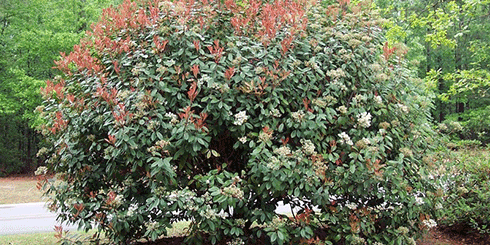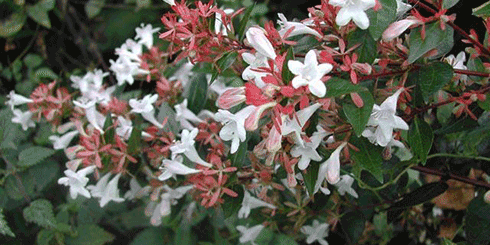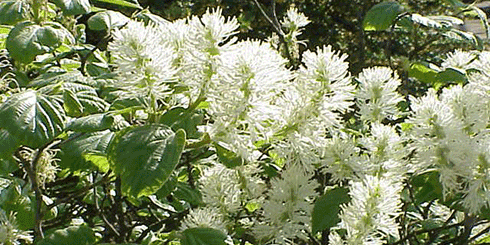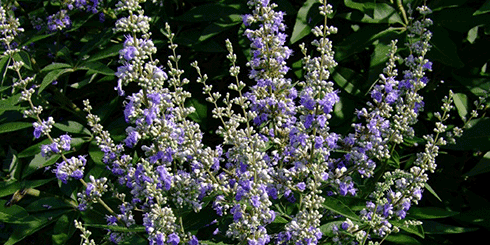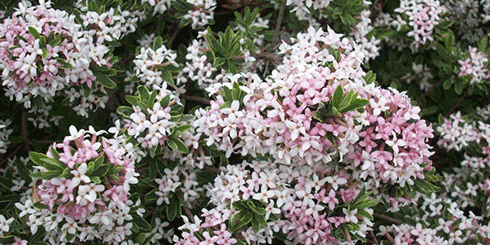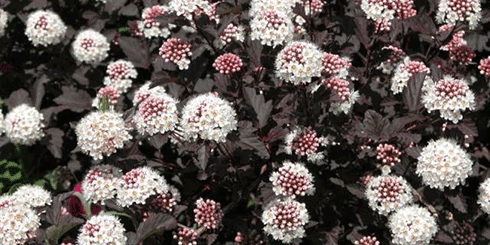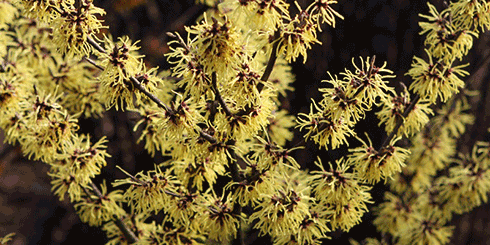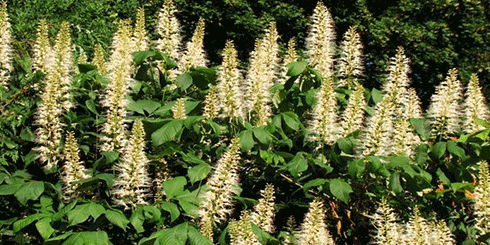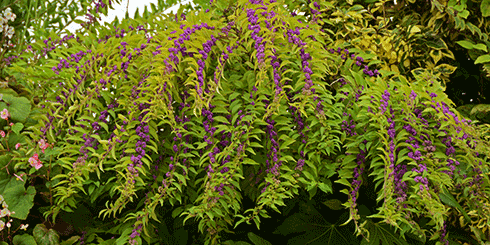Some Underused Shrubs
A Little Touchy But Worth The Effort
-
Photinia x fraseri 'Red Tip Photinia'
This is a Zone 7 plant (Virginia, Tennessee, etc.) that by rights should not grow well here. I wouldn't plant a hedge as in the south, but several in the backyard provide a nice change of pace with the lush looking foliage and beautiful flowers. The new red growth alone is worth the price of admission. We have yet to see one die here in the last 5 years.
-
-
Abelia x grandiflora 'Glossy Abelia'
Glossy Abelia is a broadleaf evergreen shrub (some stem kill will occur in our area and it is almost like a perennial) with glossy dark green leaves (usually with 5 sepals). Flowers are white flushed with pink and occur from May-Jun until frost. New foliage is a beautiful reddish shade. A classy but not supercilious plant, it is useful for grouping in front beds, if in a protected area. Probably one of the most underused plants in our region. "Edward Groucher" is a hybrid (usually with 2 sepals) that is showier, but purportedly less hardy. Needs moist soil, full sun (or ½ shade).
-
-
Fothergilla
What's to Like: Great spring leaf color , almost blue; beautiful white spring blossoms; and in most cases outstanding orange-red fall color. Fothergilla gardenii (Dwarf Fothergilla) is an early blooming, low-growing compact shrub with brilliantly colored fall foliage. The white flower spikes have a sweet honey-scent. Fothergilla bears bright blue-green leaves in the spring and summer which turn to crimson, orange and yellow in the fall. Fothergilla major (Large Fothergilla) seems to prefer a shadier environment than the regular dwarf fothergilla. This plant was supposedly named for Dr. John Fothergill, an English physician who introduced many new plants into cultivation.
-
-
Vitex agnus-castus 'Chastetree'
Chastetree is mostly seen as a multistemmed plant that will achieve an ultimate height of 15 to 18 feet, but more commonly is smaller. This is generally a Zone 6 plant and may freeze to the ground in our climate. It will, however, regenerate the following spring and flowers on new wood. Flowers appear from June to September and are generally light-purplish (‘Alba” has white flowers; ‘Rosea’-pink). The leaves have a very nice odor when crushed. A nice light and airy tree for a corner around a walkway. This shrub is often mistaken for either the hemp (think cannabis) or butterfly bush.
-
-
Daphne x burwoodii 'Burkwood Daphne'
'Carol Mackie' is the usual named variety of this species that is found in most garden centers. It flowers in mid spring and occasionally during the summer which I am told are quite fragrant, but I cannot attest to that. The foliage is somewhat durable (the word "semi-evergreen" comes to mind - but "semi" usually means "not"). We have found the plant to be somewhat touchy to changing environments.
-
-
Physocarpus opulifolius 'Common Ninebark'
An extremely hardy plant that, in the right location, will obtain a large size. The main features are the foliage color and the showy blossoms. Quite impervious to disease and insects and very useful as a backdrop or border plant.
-
-
Hamamelis x intermedia 'Witchhazel'
The only claim to fame for this plant is that it is the absolute first plant to bloom during the year - beginning in February. It is quite a joy to behold when it contrasts defiantly against the snow. Blossom colors range from yellow to orange to red depending upon variety. It has the typical Witchhazel leaf, stem form and fall color, which is nothing spectacular.
-
-
Aesculus parviflora 'Bottlebrush Buckeye'
This plant is noted for its handsome foliage, but I doubt if anyone would plant it were it not for the beautiful blossoms in June. The chestnuts in the fall are a bonus for the wildlife.
-
-
Callicarpa dichotoma 'Purple Beautyberry'
While the flowers in mid summer are not showy, the berries are the predominant feature of this plant. Will grown 3 to 6 feet high, although Purple Beautyberry is a smaller bush than Japanese or American. A very underused plant that is quite spectacular as a background in the planting beds.
-
Proven Hardy
You are here: Home » Design » Plant Database » Shrubs


